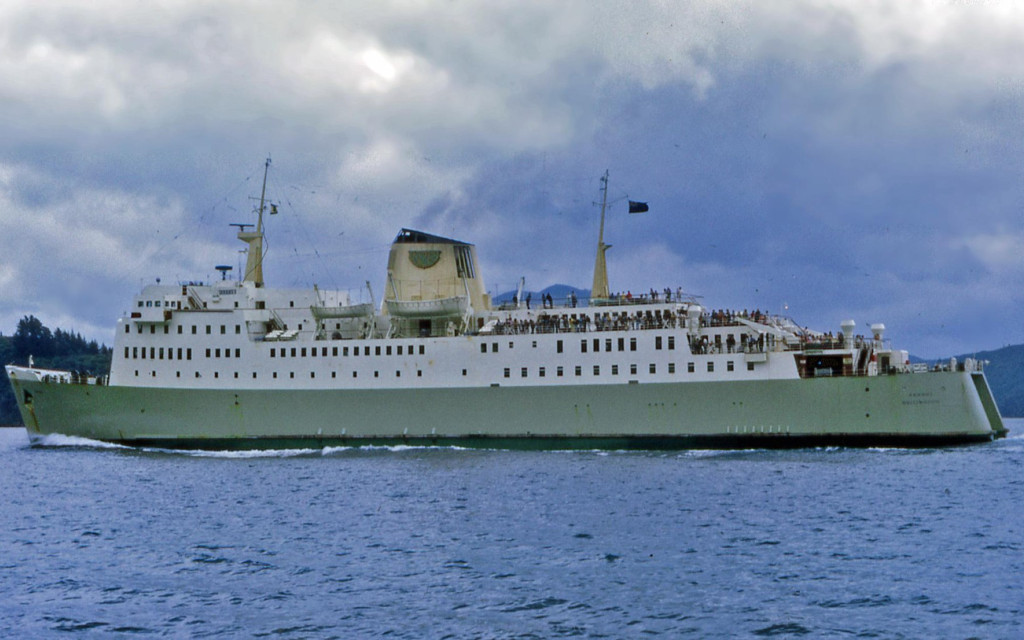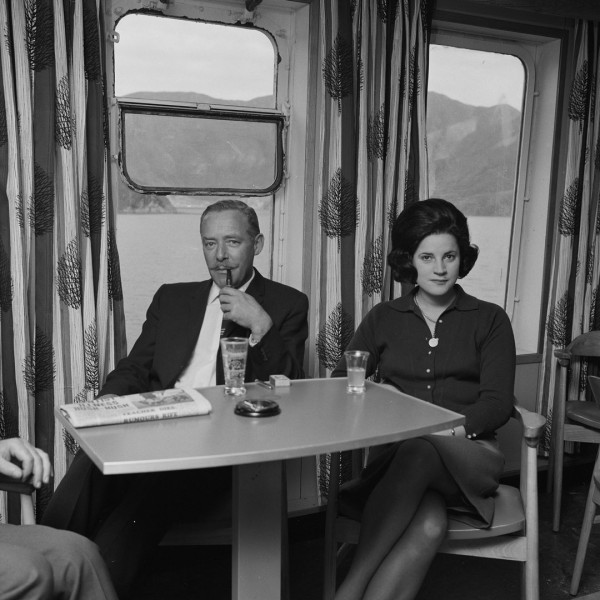Aranui
The success of Aramoana promoted a swift call for the planning of a new ship, soon to be known as Aranui.

The history of Aranui
The appetite for conventional ships with the extra time and double handling of loading and unloading cargo quickly diminished.
No time lost in extending inter-island ferry fleet
The rapid success of the first rail ferry, Aramoana, persuaded officials and politicians that no time should be lost in ordering and building a second.
Before Aramoana had completed a year’s service, the planning began for a sister ship, and from these plans, New Zealand Railways commissioned the building of the Aranui.
While it made sense to follow a proven design, there were some adaptations including more enclosed deck space as well as the passenger capacity being increased.
Reductions in fares and freight charges were also announced to take effect from the date of the introduction of the new two-ship timetable. The Minister of Railways at the time said it was the second reduction in passenger fares and car rates since the inception of the service.
The Aranui arrived in Wellington in May 1965 via the Suez Canal. It entered service on 9 June. In 1977, Aranui made the long trip to Singapore for a major refit increasing its capacity to 950 passengers.
In 1983, the Aranui and Aramoana were replaced by the much larger Arahura.
Aranui was withdrawn from service in June 1984 and sold to a marine agency in Saudi Arabia.

A couple of passengers posing for the camera on Aranui
Aranui's hull gets a serious lick of paint
A major repaint job on the underwater hull of the Cook Strait Ferry Aranui saw the vessel use less fuel on the Wellington-Picton run.
Fourteen years of paint was stripped off and a special chlorinated rubber paint was sprayed on the ten-day paint operation carried out in the Wellington dry dock. The new paint meant a smoother surface providing lesser friction through water.
The paint job was carried out by a Petone firm Steam and Sand Ltd. About 2,500 litres of paint was used on the 24,000 sq ft of the Aranui’s underwater hull. The special chlorinated rubber paint was manufactured by Transocean Paint system of Auckland.
Aranui Statistics:
- Meaning of the name: Great path
- Built: 1965 by Vickers in Newcastle, England
- Gross tonnage: 3,281 gross tonnes
- Length: 112.2 metres
- Capacity: 800 passengers / 70 cars /30 railroad cars
Tell us your Interislander story
Most Kiwis have a memory of a trip on the Interislander or maybe you or your whanau worked on the ferries. We are keen to hear your stories. We will add each to the ship pages so they reflect the connections people have to each of the ferries. Photos are greatfully received as well.
You can email us your story at marketing@interislander.co.nz
